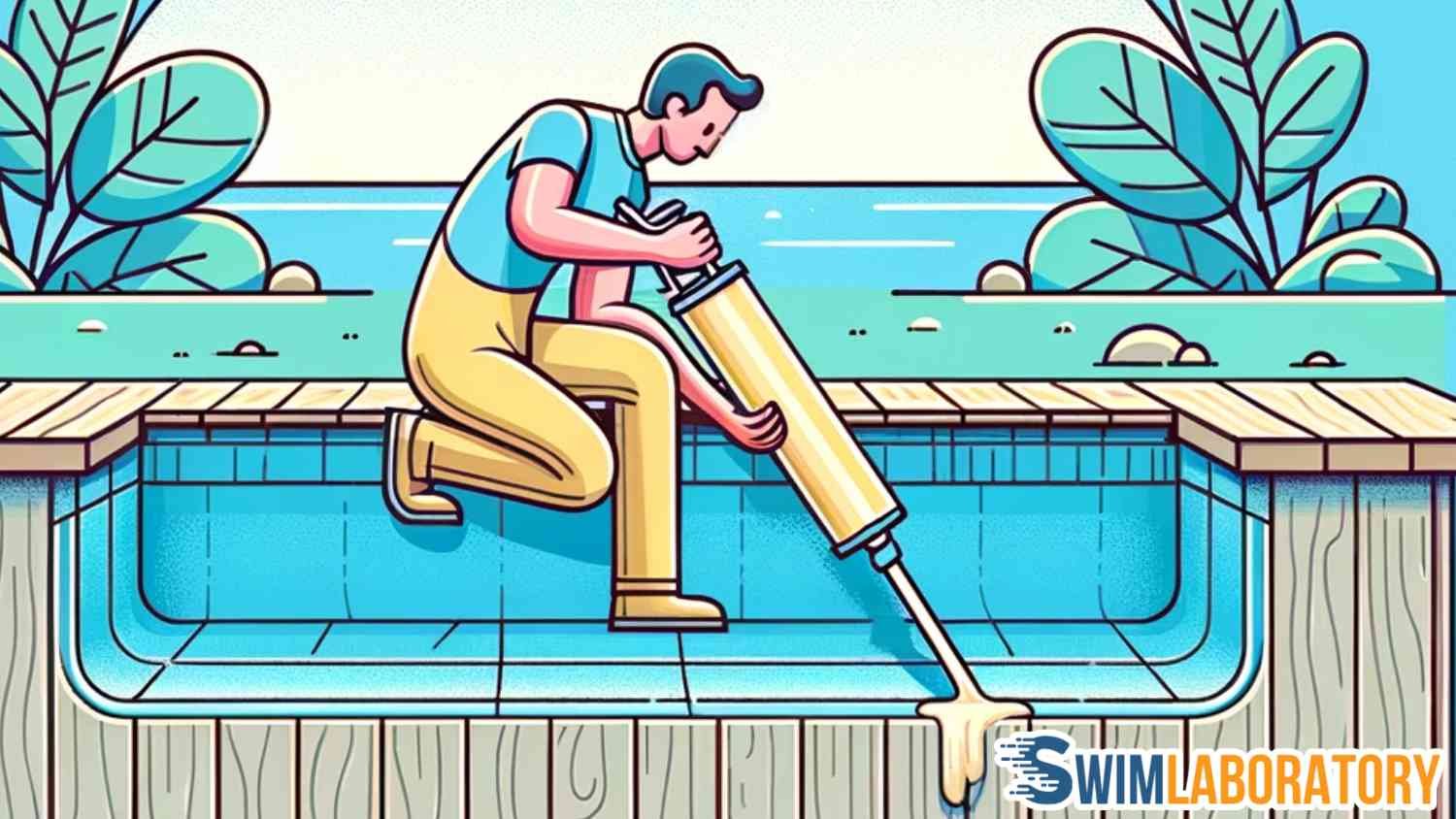Pool caulking plays a pivotal role in preserving the pool’s structural integrity and aesthetic appeal. Caulking acts as a barrier against moisture, preventing it from seeping into areas where it could cause harm. The caulking around the pool can deteriorate over time due to environmental influences and the pool’s natural movement.
Knowing when and how to replace pool caulk is vital for pool owners. This caulking guide delves into the reasons for replacing pool caulking, the signs indicating its necessity, and practical tips for both replacement and future prevention of pool caulking problems.
Why Do You Need To Replace Pool Caulking?
Pool caulking is crucial for preventing moisture from penetrating areas where it should not be. This protection is similar to the role of caulking around bathtubs or windows. Over time, pool caulking deteriorates due to age and environmental factors.
Weather changes cause pools to expand and contract, often leading to the cracking or failure of pool caulk. This is especially pronounced in concrete pools, and some vinyl pools, which feature an expansion joint connecting the concrete to the pool. Caulk seals this joint, but when it fails, moisture can infiltrate the joint. This moisture, subject to weather-induced expansion and contraction, can cause significant structural damage to both the pool and its surroundings. If you don’t fix the problem with the caulking, it might cost a lot of money to fix the swimming pool.
How To Replace Old Pool Caulking?
Replacing old pool caulking is a manageable task for experienced do-it-yourselfers, but it’s advised to seek professional help if in doubt, to avoid potential pool damage. The pool caulking process involves 9 steps. The nine steps are listed below.
- Preparation: Begin by using a big brush or leaf blower to clear the area around the caulking site, ensuring it is free from leaves and debris.
- Removal of Old Caulk: Carefully scrape off and remove all of the old caulk. Any remnants should be blown away to clean the area thoroughly.
- Drying the Area: Confirm that the area is completely dry before proceeding to the next step.
- Setting Up the Workspace: Place a piece of flat cardboard on the ground adjacent to the area you will be working on, to keep tools and materials within reach and organized.
- Inserting Foam Backer Rod: Insert a foam backer rod inside the crack, pressing it down firmly to form a solid base for the new caulk.
- Applying New Caulk: Place the pool caulking in a caulking gun, snip off the end, and apply an even bead of caulk across the area.
- Finishing Touches: Wipe away any caulk that strays outside the intended area and go back over the work to fill any missed spots.
- Optional Sand Application: For a color match to your concrete, sprinkle a little sand into the wet caulk.
- Drying: Allow the caulk to dry thoroughly, ensuring it fills every nook and cranny to prevent water infiltration.
Following this methodical approach will ensure a neat and effective caulking job, protecting your pool from potential water damage and keeping the pool clean.
What Are The Signs That A Pool Needs New Caulking?
Inground pools display 3 main indicators when new caulking is required. The 3 signs that a pool needs new caulking are listed below.
- Pool Cracks and Deterioration.
- Visible cracks along pool walls, coping, or deck.
- Soft, spongy, or crumbling caulking upon touch.
- Discoloration of caulking, turning black, gray, or chalky.
- Water Leaks.
- Pooling water around the pool indicating potential leaks.
- Wet spots on the deck near pool walls or coping.
- Faster water loss from the pool, especially during dry periods.
- Unsightly Pool Appearance.
- Cloudy or discolored pool water, possibly due to sealant leaching.
- Cracked or falling pool tiles.
- Overall unkempt appearance of the pool due to old, cracked caulking.
Addressing these signs promptly is crucial for pool maintenance. If your swimming pool needs new caulking, don’t wait too long.
What Are Some Tips For Preventing Future Pool Caulking Problems?
To minimize future pool caulking issues follow these 5 tips. The five preventive measures are listed below.
- Opt for high-quality, inground pool-specific caulk.
- Regularly clean pool joints to remove dirt and debris.
- Promptly repair any cracks or damage to the pool deck or surface.
- Avoid harsh chemicals or solvents near pool caulking.
- Consider UV-resistant caulking to prevent fading and cracking.
Following these tips can significantly prolong the lifespan of pool caulking.

